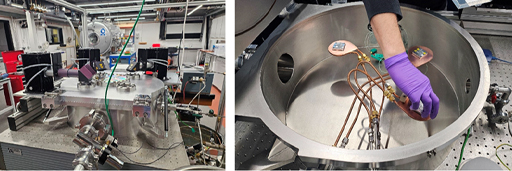4.3.2 Sterilisation during a mission
If only pre-launch sterilisation had been applied to the Europa Clipper mission, the bioburden reduction processes would have been too extreme for most electronics and optics to withstand.
Therefore, the mission team took on a statistical approach that took into account:
- The probability of impact after failure.
- The probability of Europa’s surface hosting one or more microbes and a resurfacing (overturn of the surface) that causes the microbe to contact Europa’s surface ocean.
- Estimation of the number of microorganisms pre-launch and the biocidal effect on the route and on the surface of Europa (should there be an impact).
Previous experiments, including laboratory simulations and experiments onboard the International Space Station (Section 2.1.2), which have involved scientists from The Open University, have shown that the radiation environment of space, its cold temperatures, the vacuum of space and impacts from dust in space are detrimental to microbial life. For this reason, the Open University are also investigating whether the environment conditions at the surface of Mars could also be used as a sterilisation approach for planetary protection. For this work, an environmental simulation facility is used (Figure 32) that can simulate conditions experienced at the martian surface, including low atmospheric pressure (6 mbar), low temperatures (243 K) and exposure to UV radiation, to study microbial survival.

